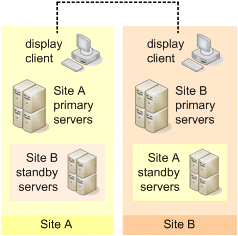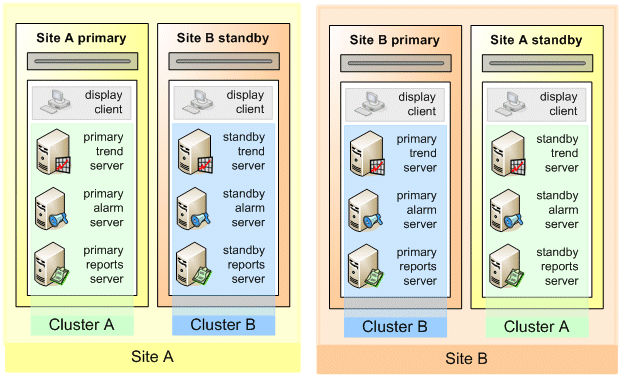
In this scenario, a project represents a number of locally operated sites each containing its own set of servers and clients. For example, a number of pumping stations across a water distribution system, or multiple production lines in a manufacturing facility. However, there is a requirement for monitoring to continue in the event the system at one of the sites becomes inoperative.
This is achieved by distributing the primary and standby servers across the different sites, or by placing the standby servers in a central location.
Clustering is used to define the role of the different servers at each site, which can be viewed in a common project running on every client. This means Site A can be monitored from Site B, and vice versa, if a system becomes inoperative at one of the sites.

The example above would require the creation of two clusters, so that the project can include two sets of primary and standby servers. The clusters represent the redundant pairs of servers, and would be deployed across the two sites as follows:

The clusters offer the benefit of keeping a logical structure to the project during configuration, despite the unusual distribution of redundant server pairs.